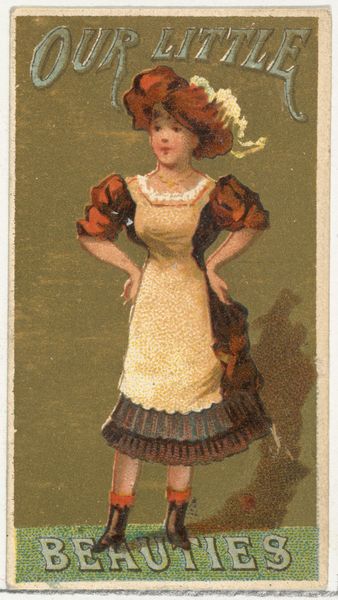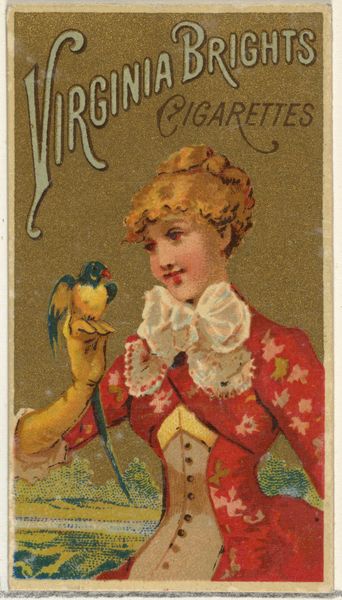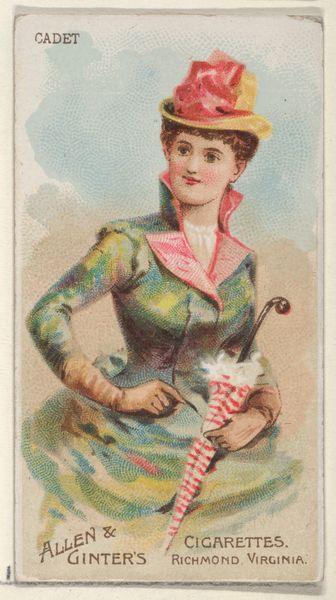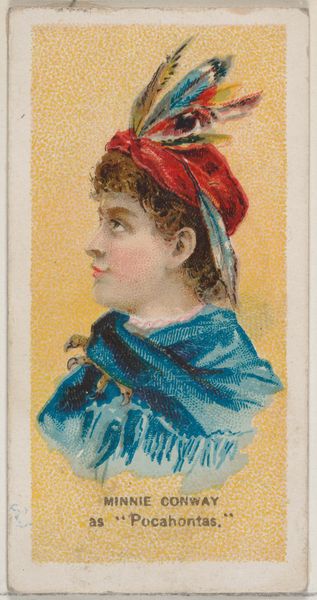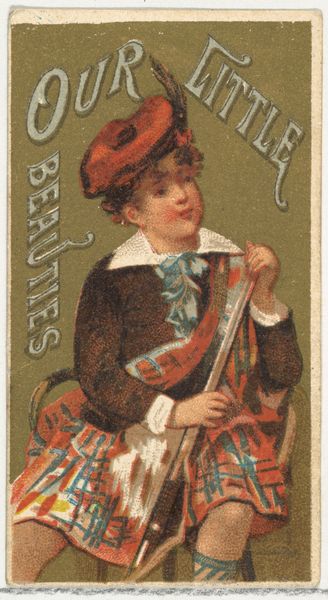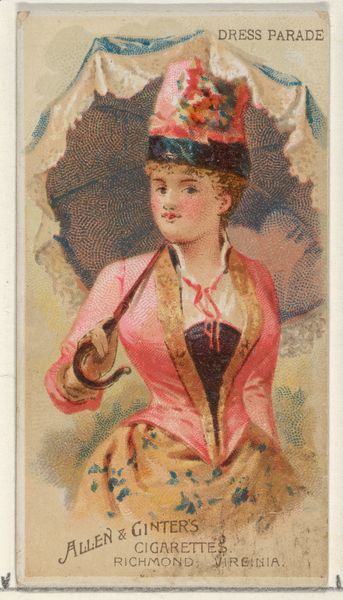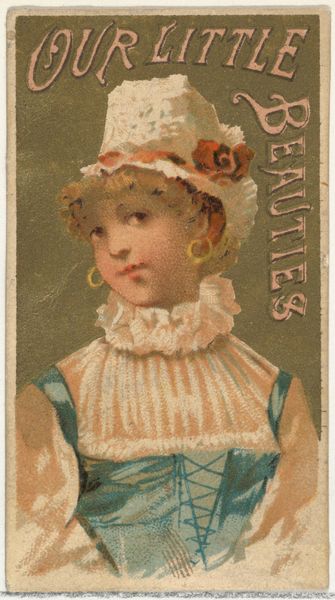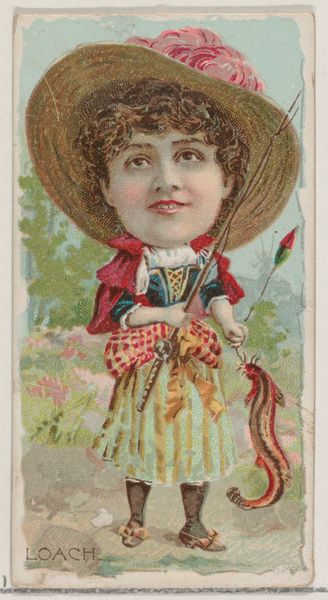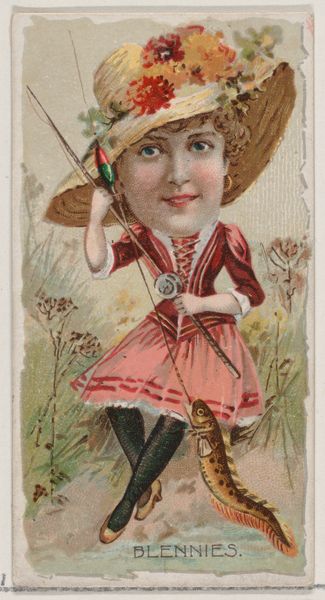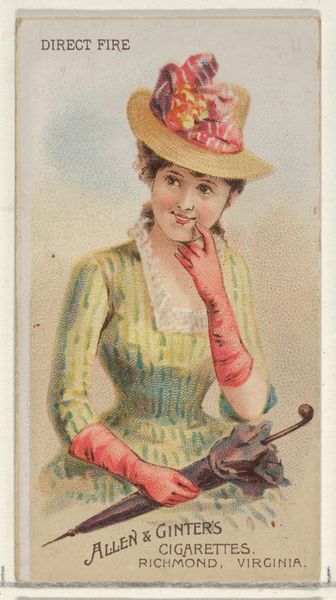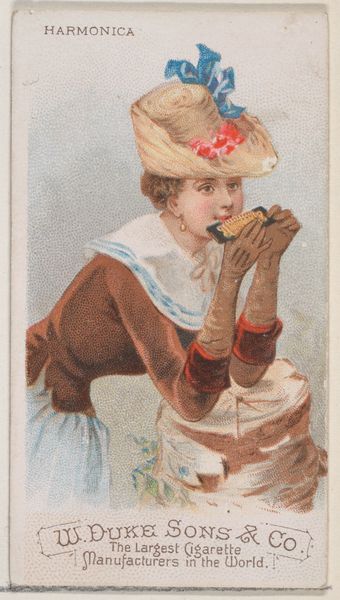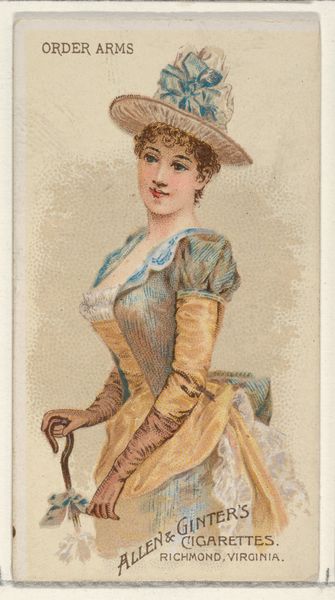
From the Girls and Children series (N58) promoting Our Little Beauties Cigarettes for Allen & Ginter brand tobacco products 1887
0:00
0:00
Dimensions: Sheet: 2 5/8 × 1 1/2 in. (6.7 × 3.8 cm)
Copyright: Public Domain
Curator: Let's examine this chromolithograph from 1887, titled "From the Girls and Children series (N58) promoting Our Little Beauties Cigarettes for Allen & Ginter brand tobacco products." It’s currently held at the Metropolitan Museum of Art. Editor: My initial impression is of muted tones, almost as if filtered through time, with a delicate yet oddly composed depiction of the figure and text. It is, in effect, very odd to be promoting tobacco with the image of a young girl. Curator: It is interesting, isn't it? Allen & Ginter were, indeed, very active in associating their tobacco products with idealized images of women, children and themes from the Ukiyo-e artistic school. In the late 19th century this approach was common. It suggests an active campaign towards the gentrification of tobacco products through idealized feminine themes that is disturbing today. Editor: I find the color choices intriguing. The somewhat desaturated browns and reds, and muted green shades create a contained tonal palette. Do you see any symbolic meaning embedded in this restrained composition, outside the obvious ironic, manipulative intention? Curator: Well, beyond its role in marketing, it’s a complex visual document. The girl is centered within a carefully orchestrated series of implied cultural performances regarding women. Her pose, costume, even the surrounding lettering place her within a highly constructed and idealized vision, all subtly selling a narrative of purity and innocence tied to, incredibly, tobacco use. There's an undeniable tension between the aesthetics and its insidious cultural messaging, one that continues to invite a necessary sociohistorical reading. Editor: I agree. Despite my interest in formal considerations, one can’t dismiss the striking dissonance, particularly from our present vantage point. Considering the original size—presumably small, for distribution with the cigarettes themselves—the degree of control in values, saturation, and color density is rather skillfully designed. Curator: Ultimately, the artwork—or rather, this promotional token—becomes a cultural artifact, reflecting Victorian-era gender norms and advertising tactics, reminding us of how consumerism intertwines with identity, power, and sometimes exploitation. Editor: Precisely. That final, lasting juxtaposition lingers longer than any initial appreciation of pictorial design. Thank you for that additional historical framework.
Comments
No comments
Be the first to comment and join the conversation on the ultimate creative platform.
